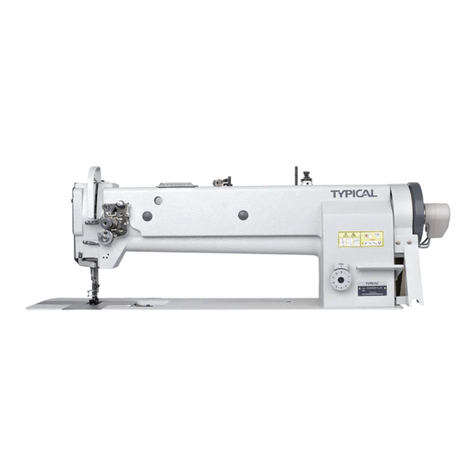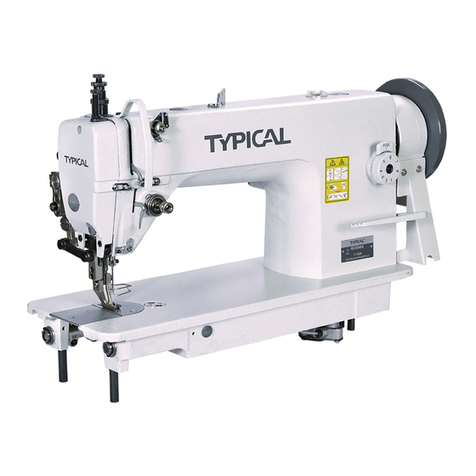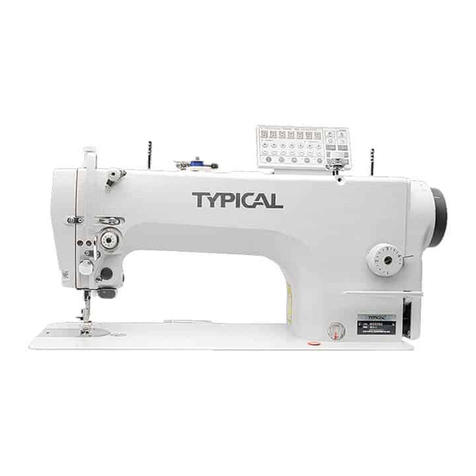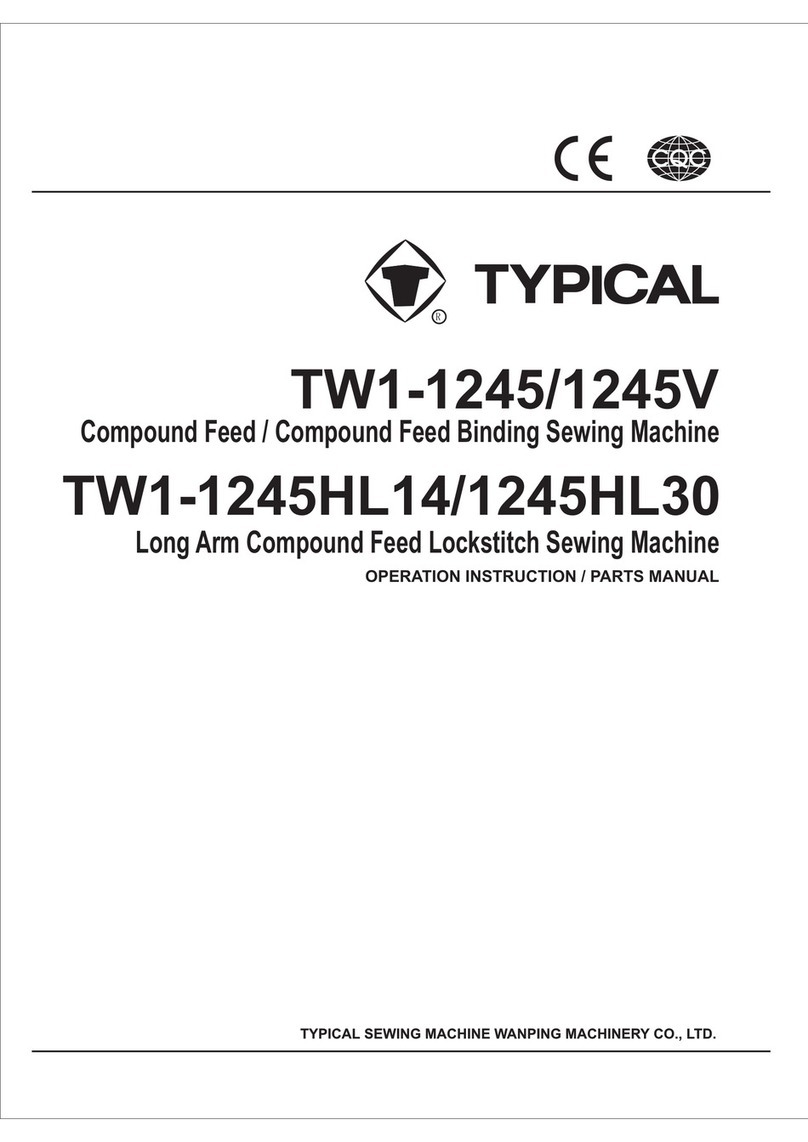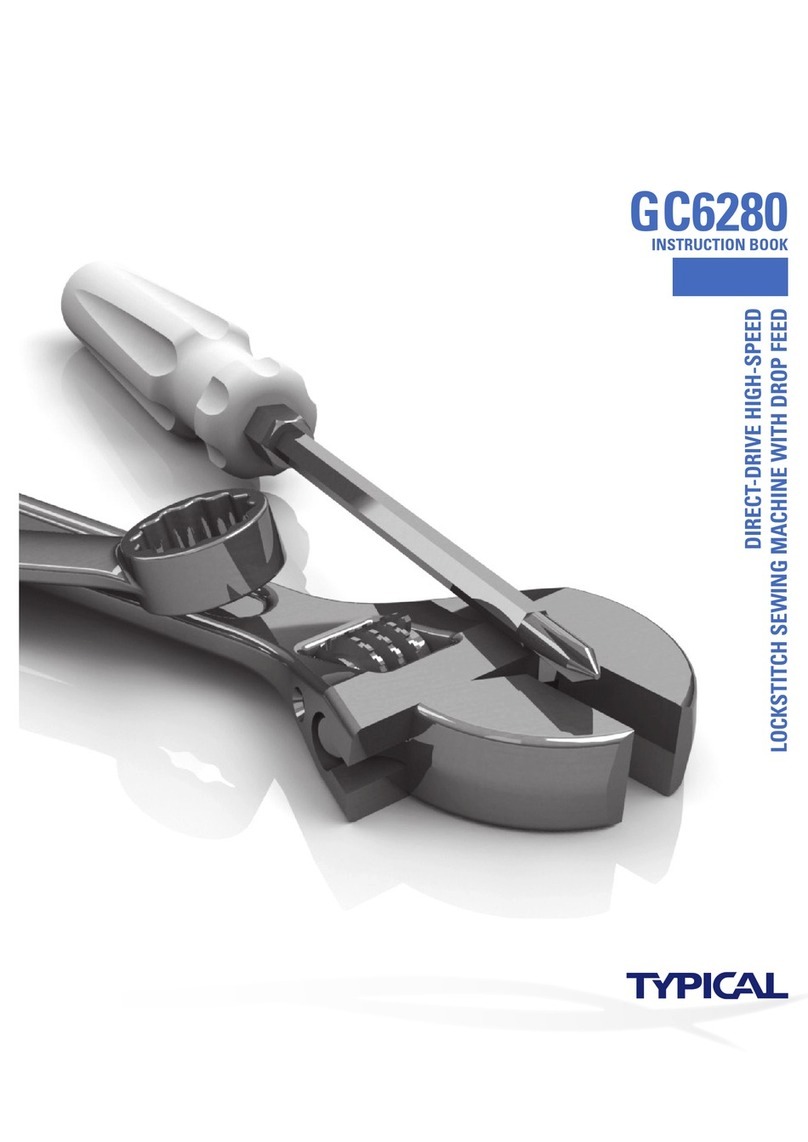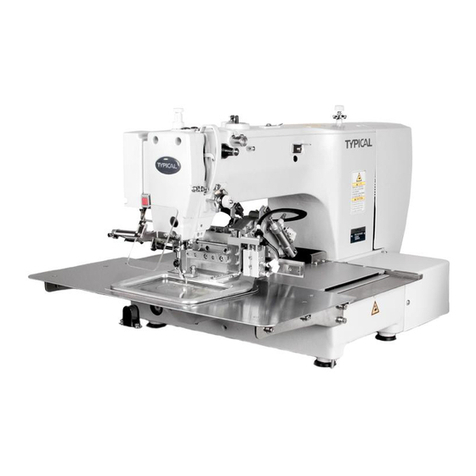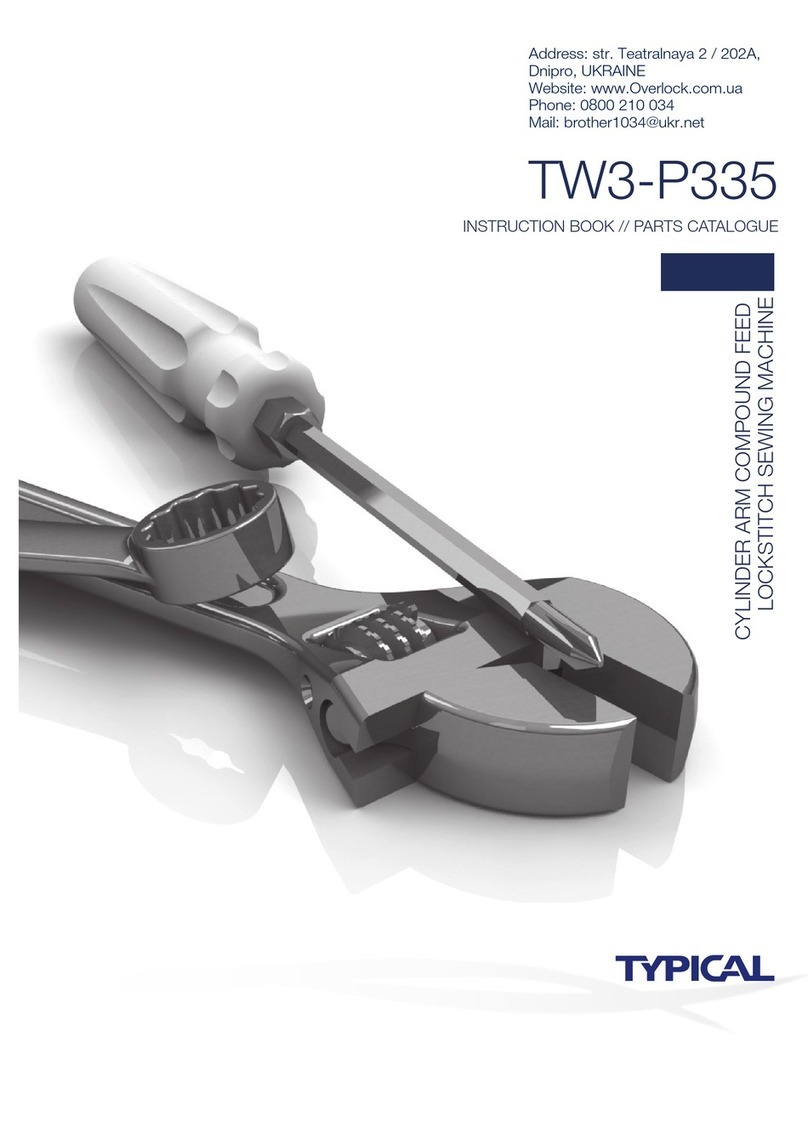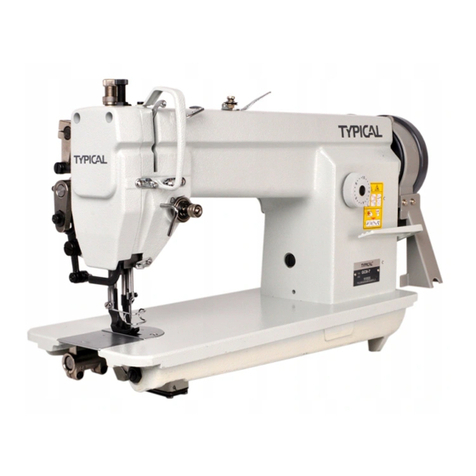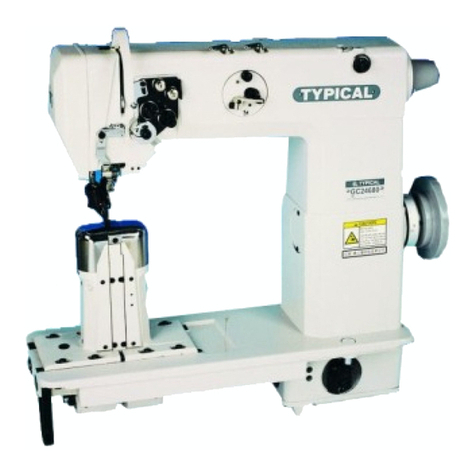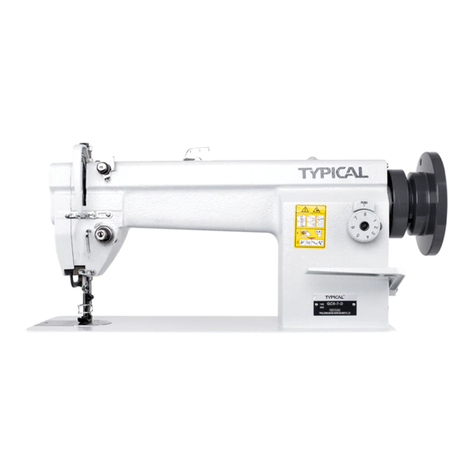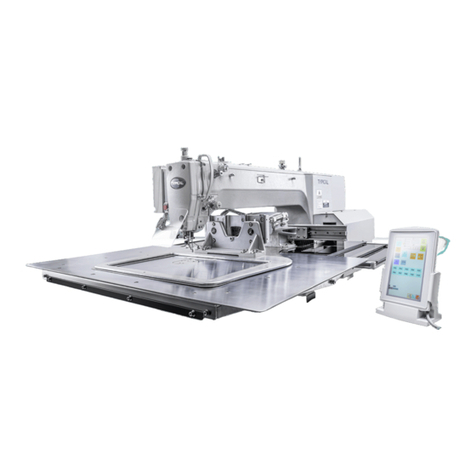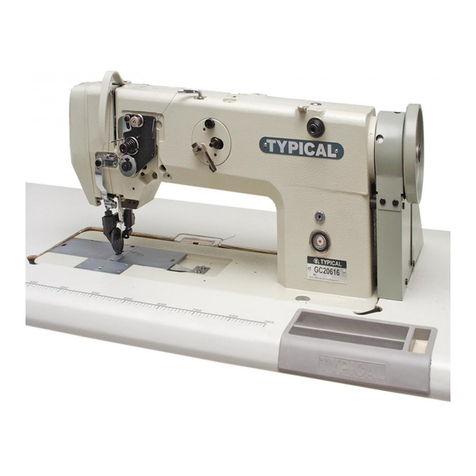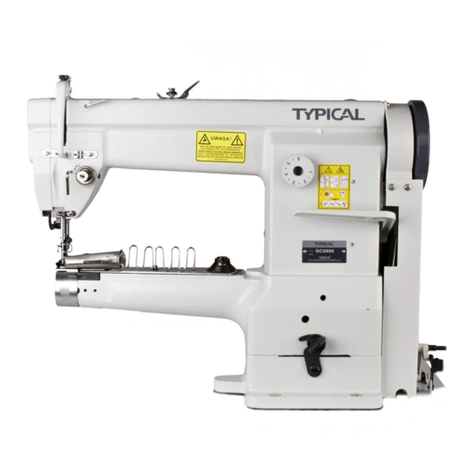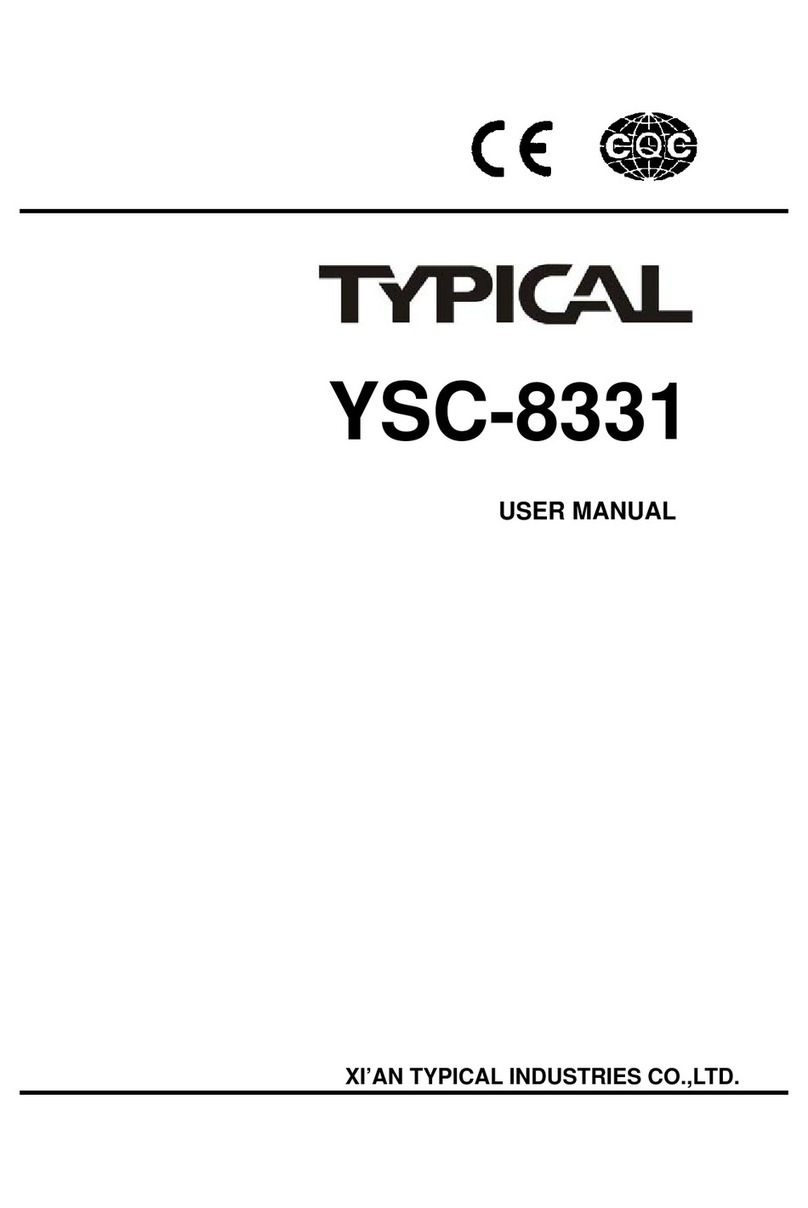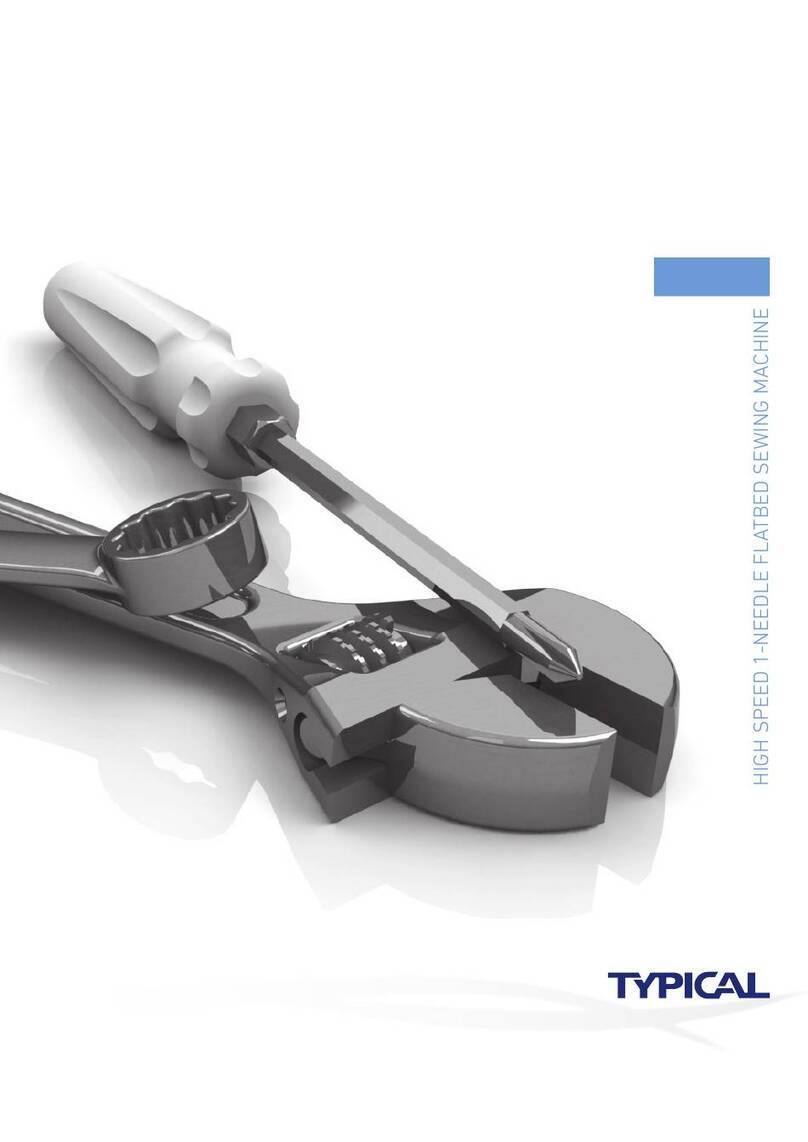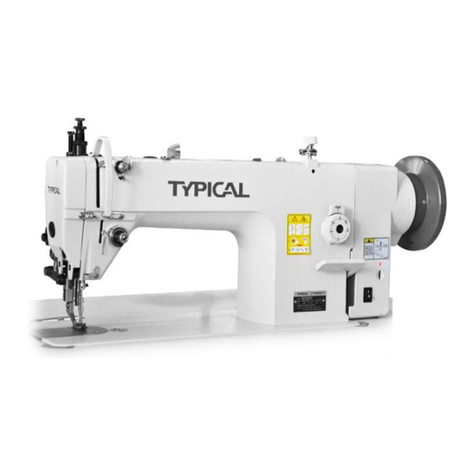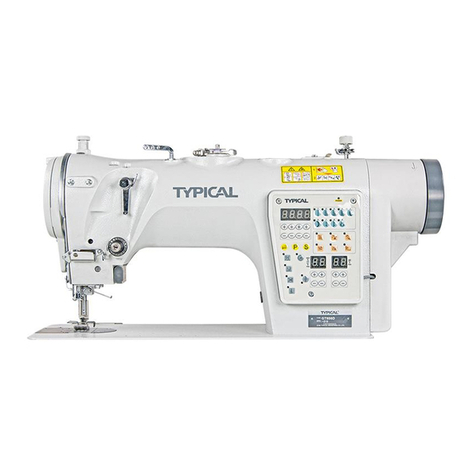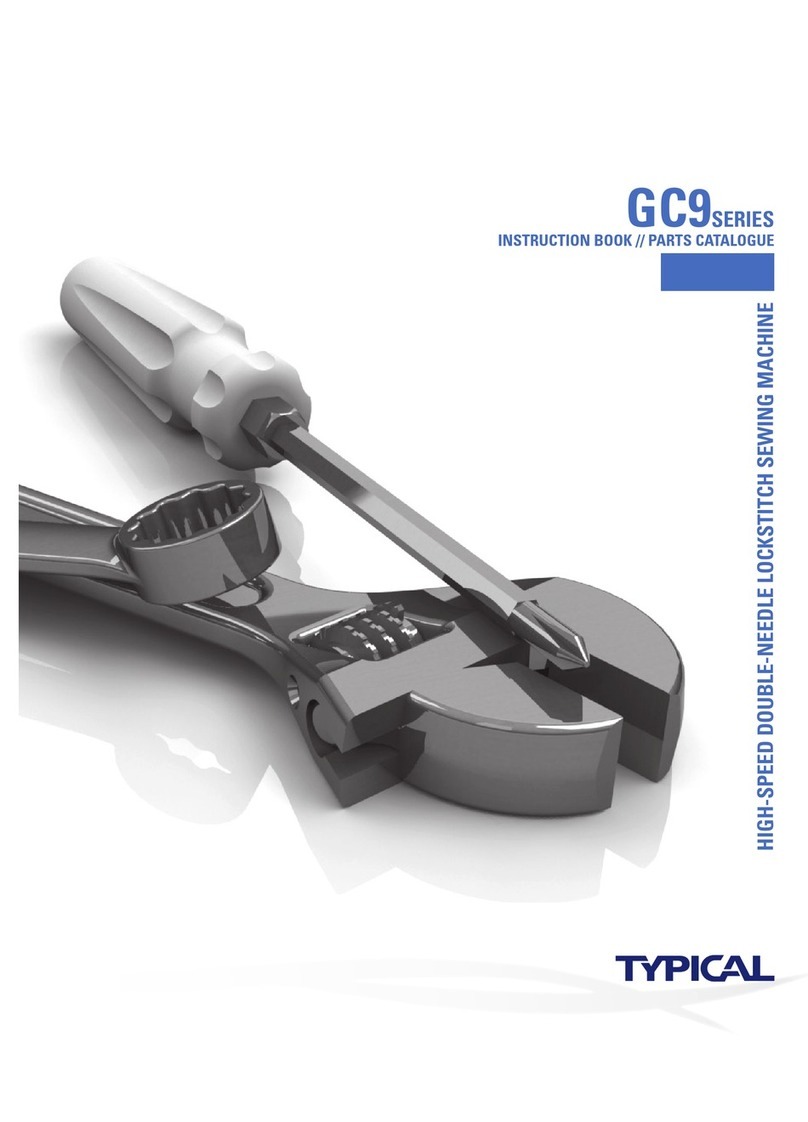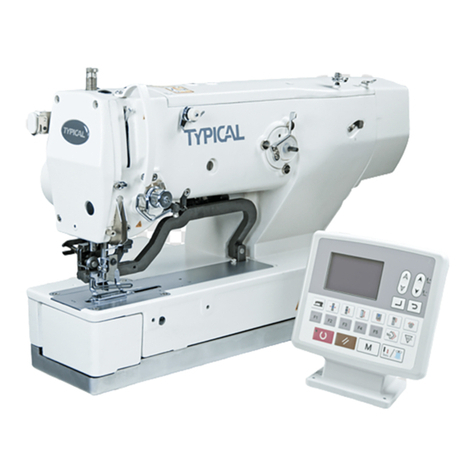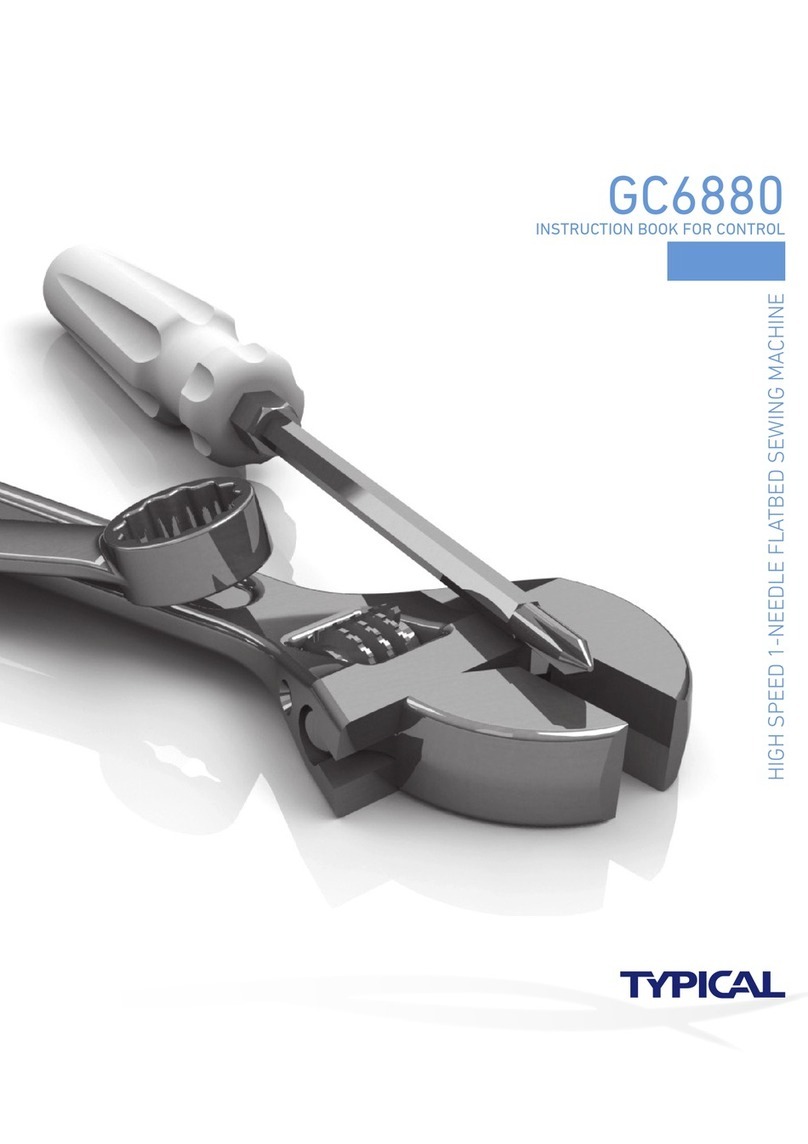
a
b
c
d
e
f
g
h
i
j
K
C
E
A
B
D
abcd
A
B
C
D
-5-
When threading the needle thread, the needle bar
must be its highest position. The correct threading
stepsasbelow: .
When threading the needle thread, the needle bar
must be its highest position. The correct threading
stepsasbelow: .
Bobbin thread should be neat and tight. If not,
adjust the thread tension by turning tension stud
thumbnut (A) of bobbin winder tension bracket.
When the bobbin thread layer cannot present a
cylindrical shown as Fig. a. loosen the tension
bracket screw (B) and move the tension bracket
leftward or rightward. If the thread is as shown in
Fig. b, move the tension bracket rightward. If the
thread is as shown in Fig c, move the tension bracket
leftward. Till the thread as shown in Fig. a, tight the
screw.
Note: Nylon or polyester thread should be wound
with light tension, otherwise bobbin (D) may be
broken or deform. Do not overfill the bobbin, the
optimum capacity of thread will fill about 80% of
bobbin outside diameter. This can be adjusted by
stop latch screw (E).
.
.
Bobbin thread should be neat and tight. If not,
adjust the thread tension by turning tension stud
thumbnut (A) of bobbin winder tension bracket.
When the bobbin thread layer cannot present a
cylindrical shown as Fig. a. loosen the tension
bracket screw (B) and move the tension bracket
leftward or rightward. If the thread is as shown in
Fig. b, move the tension bracket rightward. If the
thread is as shown in Fig c, move the tension bracket
leftward. Till the thread as shown in Fig. a, tight the
screw.
Note: Nylon or polyester thread should be wound
with light tension, otherwise bobbin (D) may be
broken or deform. Do not overfill the bobbin, the
optimum capacity of thread will fill about 80% of
bobbin outside diameter. This can be adjusted by
stop latch screw (E). .
.
Stitch length can be adjusted by moving adjusting
spanner (A). Turning the adjusting spanner clockwise,
the stitch will be shorter. Otherwise, the stitch length
will be longer. After finishing adjustment, take a
paper to test the stitch length until obtaining the
satisfied stitch length. Then check if the forward
stitch length is same as reverse stitch length. If the
reverse stitch length is shorter than forward stitch,
turn the screw (C) counter clockwise, and then
tighten the nut. Otherwise, turn the screw clockwise.
It also can be adjusted by turn screw (D). .
Stitch length can be adjusted by moving adjusting
spanner (A). Turning the adjusting spanner clockwise,
the stitch will be shorter. Otherwise, the stitch length
will be longer. After finishing adjustment, take a
paper to test the stitch length until obtaining the
satisfied stitch length. Then check if the forward
stitch length is same as reverse stitch length. If the
reverse stitch length is shorter than forward stitch,
turn the screw (C) counter clockwise, and then
tighten the nut. Otherwise, turn the screw clockwise.
It also can be adjusted by turn screw (D). .
(a) Long thread retainer
(b) Short thread retainer
(c) Small thread tension disc
(d) Big thread finger
(e) Big thread tension disc and take-up spring
(f) Big thread finger
(g) Thread take-up lever
(h) Small thread finger
(i) Thread guide
(j) Thread retainer
(k) Thread guide ring
(a) Long thread retainer
(b) Short thread retainer
(c) Small thread tension disc
(d) Big thread finger
(e) Big thread tension disc and take-up spring
(f) Big thread finger
(g) Thread take-up lever
(h) Small thread finger
(i) Thread guide
(j) Thread retainer
(k) Thread guide ring
13. Threading the needle thread (Fig. 9)
14. Winding adjusting (Fig. 10)
15. Adjusting the forward stitch length
and reverse stitch length (Fig. 11)
9
10
11

